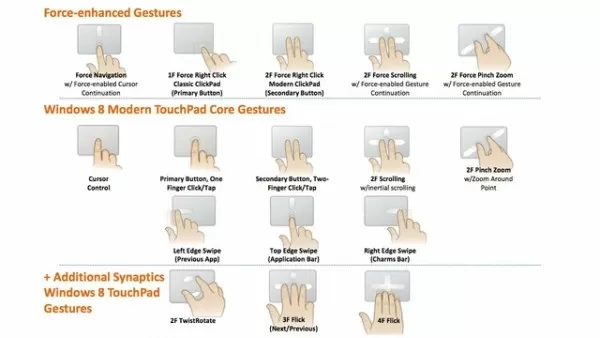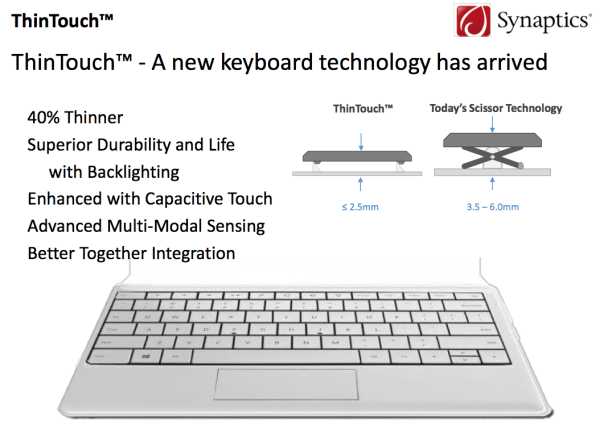Synaptics, a company well known for developing the touchpads and clickpads found on laptops from a number of manufactures, has officially announced a couple of new touch-focused products aimed at the next generation of Windows 8 devices: the ForcePad and ThinTouch. The first is a radical redesign of its existing touchpad technology, while the latter marks the company's entry into the keyboard market.
ForcePad
Both technologies are aimed at making notebooks even thinner, but they also enable new functionality. The ForcePad, for instance, provides users with a capacitive touch surface capable of detecting up to five fingers at once and even the pressure applied with each of them – up to 1000 grams of force with 64 levels of differentiation. Synaptics demonstrated the technology's accuracy with a test program that showed a sponge reacting to finger presses, and a potential use case for gaming where users could make a fighter jet tilt left or right, depending on how much pressure was applied to either side of the ForcePad.
According to the company, the added dimension of touch sensing will help preserve a consistent touchpad experience from laptop to laptop no matter the difference in touchpad size – which would be sort of a big deal, since from our experience, touchpads on Windows laptops have been anything but consistent.

More importantly, Synaptics worked with Microsoft to develop a set of specifications and guidelines for OEMs to enable all sorts of gestures in their Windows 8 systems. That includes things like two, three and four finger swipes, two finger right clicking, scrolling, and several force-enhanced gestures.
Synaptics says the ForcePad is 40 percent thinner than a similar current-generation pad, which translates into free space for increased battery life, better cooling, thinner designs or a combination of these.
ThinTouch
The company also offered a preview of its first foray into keyboards, the ThinTouch. Synaptics says the ThinTouch keyboard will be 30 to 50 percent thinner than competing keyboards, which is possible thanks to a redesigned key mechanism that uses capacitive sensing to determine when a key is pressed, while still allowing the key to move. Rather than keys going straight down when pressed, they actually travel at an angle diagonally towards you, in theory providing similar feedback as a standard keyboard but taking up less space.
Since there's no switch below the surface of the key, backlighting becomes an easier problem to solve too, while also supposedly offering improved manufacturability and reliability. Since each key is touch and pressure sensitive, things like keyboard-based gesture commands are also possible, or being able to detect where your hands are for text prediction and avoiding touchpad interference while typing.

It's unclear when either of Synaptics' new products will make their way into laptops and how much it would add to OEM manufacturing costs. We know the latter like to cut corners to keep costs down, but perhaps Synaptics' strong foothold in the touchpad market will help speed up adoption.